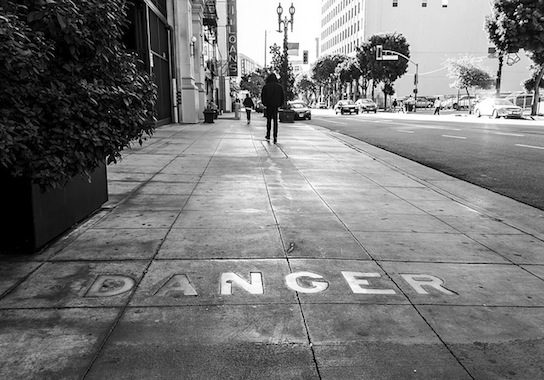Housing the Homeless in Hipsterville

Gentrification has consequences, as Ed Leibowitz’s Wednesday piece in Politico Magazine makes clear. Los Angeles is notorious for its rampant homelessness problems, and Skid Row was one of its most prominent corners of poverty, “an economic black hole in the middle of the city, where the helpless and hopeless washed up and would remain, very much out of sight and out of mind.” But as an urban boom has swept the U.S. in the past decade, things are changing:
… for several decades, the only signs of commercial life along this stretch of Main Street were dive bars, grimy convenience stores and gritty “single-room occupancy” hotels, home to the poorest of the city’s poor. Yet today the sidewalks bustle outside shops selling vegan cinnamon ice cream, $50 bottles of Rioja, artisanal cupcakes and those designer products for one’s pooch. Hipsters with beards worthy of Brooklyn’s Williamsburg emerge from lobbies of restored loft buildings where a two-bedroom apartment can go for as much as $3,000 a month … Skid Row, the homeless capital of the United States, is going upscale.
Where will the homeless go if Skid Row becomes an expensive hipsterville? This is a key question in Leibowitz’s story. He points to several efforts by non-profits and government agencies to procure housing for the homeless. Yet their efforts are often expensive—consider Gateway Apartments, a new $28 million housing complex just opened for the homeless. Leibowitz says its units “look like dorm rooms for college students who have won the campus housing lottery.” Homeless applicants must be chosen from a pool of applicants to live here. Is this better than procuring cheaper housing for a greater amount of people? Will Gateway housing be permanent, or do organizers intend to eventually cycle out current tenants to make room for more? How do they fairly judge which homeless people are “worthy” of housing?
Alice Callahan, director of Las Familias Del Pueblo in Los Angeles, has some of these concerns: “We’re just choosing this homeless person over that homeless person, and we are saying the other one will stay on the sidewalk because we’re not offering them anything,” she tells Leibowitz. Callahan has helped numerous homeless procure cheap housing through her efforts. She sees a finite amount of housing available, and 5,000 Skid Row inhabitants who need a home.
In his excellent piece “The Answer to Homelessness,” published in the March/April edition of TAC’s magazine, John Stoehr reported on Utah’s efforts to help the homeless—an initiative many conservatives are applauding due to its considerable success. Although the state gives away free housing, it’s still saving money: “When Utah officials added up the amount going into medical treatment and law enforcement, the cost to the state per homeless individual was more than $216,300 a year in 2007 dollars, according to Housing Works. The cost of housing, rent assistance, and full-time case management, meanwhile, was just $19,500.”
The state has decreased homelessness by 74 percent, and has saved money in the process. The problem, however, is that Utah is currently targeting a homeless population of 3,000 statewide—Skid Row alone has 5,000 homeless residents. Additionally, housing in Utah is likely to be cheaper overall than housing in Los Angeles. Nonetheless: there ought to be ways in which L.A. could imitate Utah’s efforts. By transitioning people into permanent housing, creating fair rent agreements, and offering the assistance of a full-time case worker, Utah has created a replicable model. The key, in L.A.’s case, may be figuring out logistics in a city where cheap housing is quickly diminishing.
To Callahan, the gentrification of Skid Row paints a rather callous portrait of the encroaching elites. But this urban growth needn’t become opportunity for apathy and cruelty. Much depends on the way Skid Row’s new inhabitants treat their homeless neighbors. While some may desire to push out the homeless, others may help support them.
“There’s a price that we are paying for homeless,” Sam Tsemberis said in 2012. “Not noticing is costing not only the people still homeless on the streets but it’s costing us. If we take for granted the feeling of seeing a homeless person and walking by, we have to shut down part of ourselves in order to tolerate the pain we’re walking past.”
Urban growth in L.A. is good—but the plight of the homeless mustn’t be ignored in its wake. Such disinterest doesn’t just affect the homeless: it has detrimental consequences for the elites, as well.
Comments